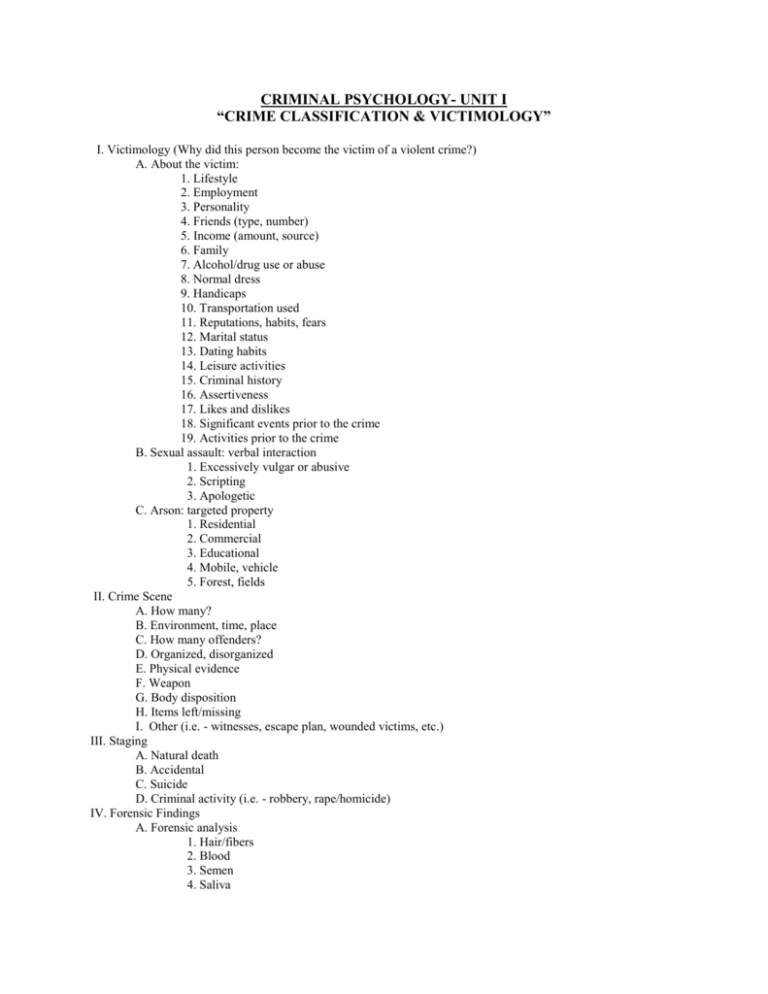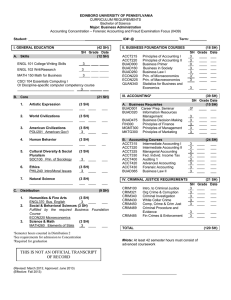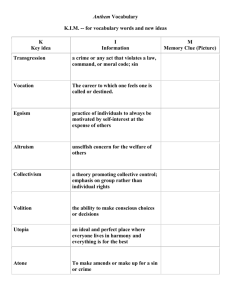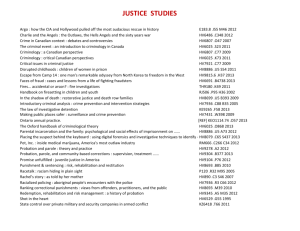Victimology Unit Outline
advertisement

CRIMINAL PSYCHOLOGY- UNIT I “CRIME CLASSIFICATION & VICTIMOLOGY” I. Victimology (Why did this person become the victim of a violent crime?) A. About the victim: 1. Lifestyle 2. Employment 3. Personality 4. Friends (type, number) 5. Income (amount, source) 6. Family 7. Alcohol/drug use or abuse 8. Normal dress 9. Handicaps 10. Transportation used 11. Reputations, habits, fears 12. Marital status 13. Dating habits 14. Leisure activities 15. Criminal history 16. Assertiveness 17. Likes and dislikes 18. Significant events prior to the crime 19. Activities prior to the crime B. Sexual assault: verbal interaction 1. Excessively vulgar or abusive 2. Scripting 3. Apologetic C. Arson: targeted property 1. Residential 2. Commercial 3. Educational 4. Mobile, vehicle 5. Forest, fields II. Crime Scene A. How many? B. Environment, time, place C. How many offenders? D. Organized, disorganized E. Physical evidence F. Weapon G. Body disposition H. Items left/missing I. Other (i.e. - witnesses, escape plan, wounded victims, etc.) III. Staging A. Natural death B. Accidental C. Suicide D. Criminal activity (i.e. - robbery, rape/homicide) IV. Forensic Findings A. Forensic analysis 1. Hair/fibers 2. Blood 3. Semen 4. Saliva 5. Other B. Autopsy results 1. Cause of death 2. Trauma (type, extent, location on body) 3. Overkill 4. Torture 5. Facial battery (depersonalization) 6. Bite marks 7. Mutilation 8. Sexual assault (when, sequence, to where, insertion, postmortem insertion) 9. Toxicological results V. Investigative considerations A. Search warrants 1. Home 2. Work 3. Car 4. Other B. Locating and interviewing witnesses











